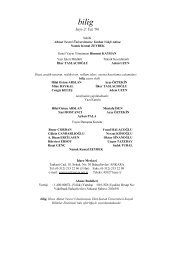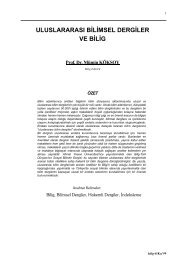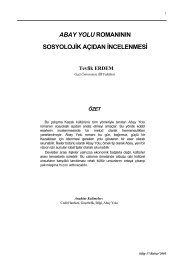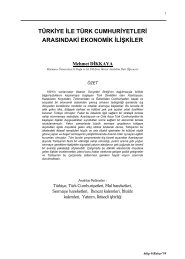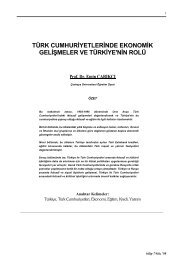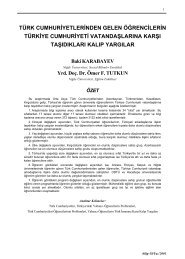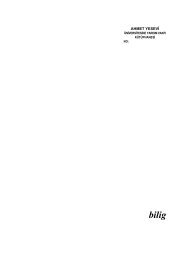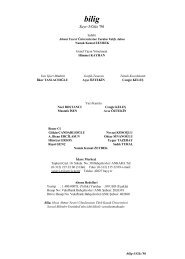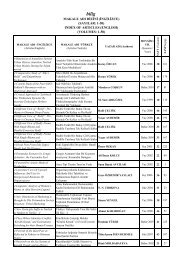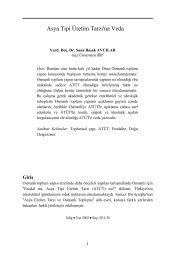Türkiye'nin Orta Asya'daki Politikas›nda - Bilig - Ahmet Yesevi ...
Türkiye'nin Orta Asya'daki Politikas›nda - Bilig - Ahmet Yesevi ...
Türkiye'nin Orta Asya'daki Politikas›nda - Bilig - Ahmet Yesevi ...
You also want an ePaper? Increase the reach of your titles
YUMPU automatically turns print PDFs into web optimized ePapers that Google loves.
Art Life in The Period of Karakoyunlular<br />
Assoc. Prof. Dr. Muhsin MAC‹T<br />
Yüzüncü Y›l University<br />
Faculty of Arts and Sciences<br />
Abstract: Karakoyunlular which comes up on the stage as a<br />
Turkoman principality depending on Celayirliler in Ercifl and<br />
its environment in the north of Lake Van in the last quarter of<br />
14th century founded a state in this area being tranferred into<br />
the sovereignity of Timurid later on and they broadened their<br />
frontiers up to Herat in the period of Cihanflah (1438-1467). Karakoyunlular<br />
reigning almost a century accepted the sovereignity<br />
of Akkoyunlular in the period of their last ruler, Hasan Ali,<br />
after Cihanflah was killed by the forces of Uzun Hasan of Akkoyunlu<br />
in 1467. Even though they were permanently in a<br />
struggle against the Timurid state, they established amicable<br />
relations with the Ottomans. Despite the political struggles between<br />
the Turkish states, they created original works on poetry,<br />
music, architecture, calligraphy, embroidery etc. under the protection<br />
of the Ottoman, Timurid and Turkoman rulers and with<br />
their participation on the line of Herat-Tabriz-Istanbul. Cultural<br />
and art activities accelerated in the centers like Tabriz,<br />
Baghdad and fiiraz with the contributions of Cihanflah and his<br />
son Pir Budak Cultural heritage of Turkomans of Karakoyunlu<br />
was transferred and delivered to their successor, Akkoyunlular,<br />
and in Turkish art history, the style called Turkoman style was<br />
brought up. This style was carried out by the artists in the Safavi<br />
palace in the 16th century.<br />
Key Words: Karakoyunlular, art, Turkoman style, Tabriz<br />
71




